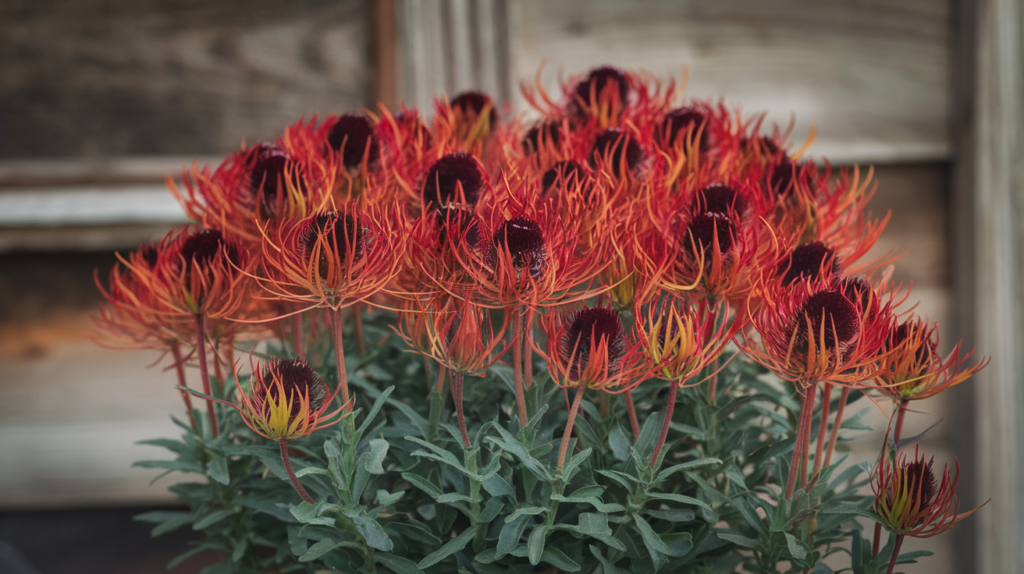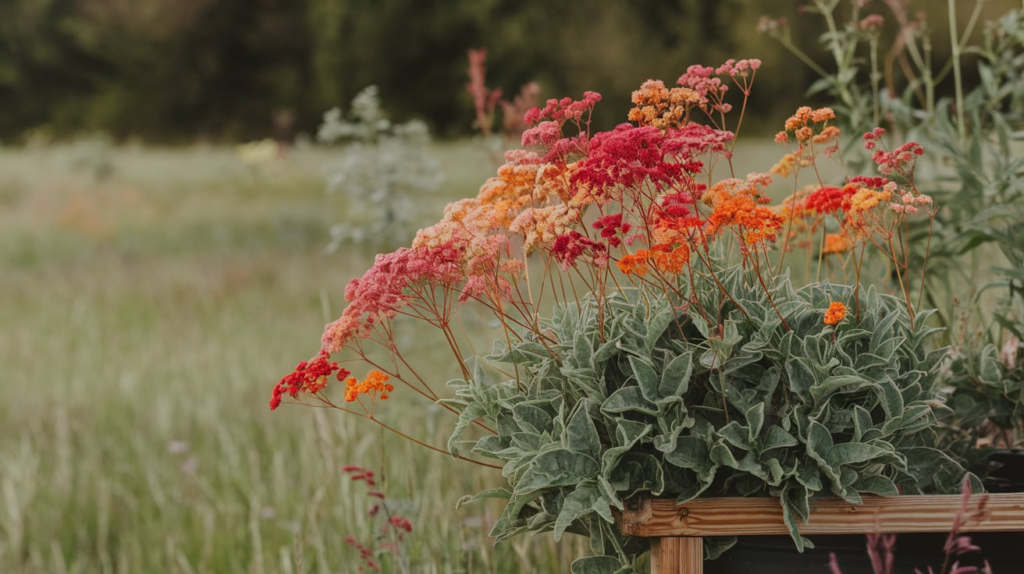The Dragons Breath Plant is a fascinating addition to the world of horticulture, captivating gardeners and plant enthusiasts alike with its fiery appearance and unique properties. This plant, a relatively new entrant in the ornamental flora scene, has gained significant attention for its vibrant hues and intriguing backstory. Originating from the Celosia genus, the Dragons Breath Plant is celebrated for its ability to add drama and vibrancy to any garden.
Origins and Classification
The Dragons Breath Plant belongs to the genus Celosia, a group known for its striking ornamental plants. Celosia is derived from the Greek word “kelos,” meaning “burned,” which perfectly describes the flame-like appearance of the Dragons Breath Plant. Native to tropical and subtropical regions, this plant thrives in warm climates, where its brilliant colors can be fully appreciated. Although it is often grown as an annual, the Dragons Breath Plant can be cultivated year-round in regions with consistent warmth and sunlight.
Striking Appearance
The primary allure of the Dragons Breath Plant lies in its breathtaking aesthetic. The plant boasts deep red, plume-like flowers that radiate heat, much like a dragon’s fiery breath. Its foliage, a mix of green and burgundy tones, complements the vibrant flowers, creating a dramatic visual contrast. The texture of the flowers adds another layer of intrigue, as they are velvety to the touch, enhancing the plant’s overall appeal. Whether planted in garden beds, containers, or as part of floral arrangements, the Dragons Breath Plant commands attention and admiration.
Growth Requirements
Growing the Dragons Breath Plant is a rewarding experience, but it requires careful attention to its specific needs. This plant grows best in soil that drains properly and has a lot of organic materials in it. Full sun exposure is essential to maintain vivid coloration and ensure robust growth. While moderately drought-tolerant, regular watering is necessary during prolonged dry spells to prevent stress. Additionally, this plant benefits from occasional feeding with a balanced fertilizer to promote blooming and maintain its striking appearance.
Temperature is one of the most important factors in cultivating the Dragons Breath Plant. This heat-loving plant prefers temperatures between 65°F and 80°F. Frost can be detrimental to its health, so it is crucial to plant it after the danger of frost has passed. In order to maintain ideal growing circumstances, mulching the plant’s base can assist control soil temperature and conserve moisture.

Versatility in Landscaping
The Dragons Breath Plant is highly versatile and can be used in various landscaping designs. Its vibrant red plumes make it an excellent choice for creating focal points in gardens or as part of a mixed border. The plant’s dramatic appearance pairs well with other species, particularly those with contrasting foliage or complementary blooms. The Dragons Breath Plant is an eye-catching centerpiece for container gardening, adding height and texture to patio or balcony arrangements.
In addition to its visual appeal, the Dragons Breath Plant is also valued for its resilience. It is relatively low-maintenance, making it an ideal choice for beginner gardeners or those looking for a show-stopping plant without extensive upkeep requirements. Its ability to withstand heat and occasional drought further enhances its suitability for diverse planting environments.
Cultural and Symbolic Significance
The Dragons Breath Plant is not just a horticultural marvel but also holds cultural and symbolic significance. In many cultures, the dragon symbolizes power, strength, and protection. The fiery appearance of this plant aligns with these attributes, making it a popular choice for gardens designed with symbolic or thematic elements. Additionally, its vibrant red color is often associated with passion, vitality, and celebration, enhancing its appeal in decorative contexts.
Common Challenges and Solutions
Like any plant, the Dragons Breath Plant is not immune to challenges. Pests such as aphids and spider mites can occasionally infest the plant, causing damage to its foliage and flowers. Regular inspection and organic insecticidal soap can help mitigate these issues. Fungal diseases, often caused by overwatering or poor air circulation, can also pose a threat. To prevent such problems, ensure proper spacing between plants and avoid overhead watering.
Another common issue is the plant’s sensitivity to cold. Even a brief exposure to frost can damage the Dragons Breath Plant, so protecting during unexpected cold snaps is crucial. Covering the plant with a frost cloth or moving container-grown specimens indoors can help safeguard against temperature extremes.
Propagation Techniques
Propagating the Dragons Breath Plant is straightforward and can be done through seeds. Start by sowing seeds indoors about six to eight weeks before the last expected frost. Make use of a seed-starting mix that drains effectively and keep the moisture content constant. Place the seed trays in a warm location with ample light to encourage germination. Once the seedlings develop a few sets of true leaves, they can be transplanted into larger containers or directly into the garden after the risk of frost has passed.
Propagating through cuttings is another viable method for gardeners seeking to expand their collection. After removing the bottom leaves from a healthy stem cutting, submerge it in water or damp soil. With proper care, the cutting will develop roots and grow into a new plant, ensuring a continuous supply of these captivating flowers.

Eco-Friendly Benefits
The Dragons Breath Plant also contributes to ecological sustainability. Its vibrant flowers attract pollinators such as bees and butterflies, supporting local ecosystems and enhancing biodiversity. By incorporating this plant into gardens, homeowners can create a more pollinator-friendly environment, contributing to preserving these essential species.
Creative Uses in Floral Design
Beyond the garden, the Dragons Breath Plant shines in floral arrangements. Its long-lasting blooms make it an excellent choice for fresh or dried bouquets. When dried, the flowers retain their vibrant color and texture, allowing for creative applications in home decor. Whether used as a centerpiece or an accent in wreaths, the Dragons Breath Plant adds a touch of elegance and drama to any arrangement.
Frequently Asked Questions (FAQs)
1. What makes the Dragons Breath Plant unique? The Dragons Breath Plant is distinguished by its fiery red, plume-like flowers and contrasting foliage, which create a dramatic visual impact. Its heat tolerance and versatility further enhance its appeal.
2. Is the Dragons Breath Plant easy to grow? Yes, it is relatively easy to grow, provided its specific needs for sunlight, well-draining soil, and warm temperatures are met.
3. Can the Dragons Breath Plant survive winter? The Dragons Breath Plant is sensitive to frost and cannot survive freezing temperatures. It is best grown annually in colder regions or brought indoors during winter.
4. How often should I water the Dragons Breath Plant? While moderately drought-tolerant, the Dragons Breath Plant requires regular watering, especially during dry spells. Avoid overwatering to prevent root rot.
5. Can I grow the Dragons Breath Plant indoors? Yes, it can be grown indoors in containers, provided it receives sufficient sunlight and warmth.
6. How can I use the Dragons Breath Plant in landscaping? The Dragons Breath Plant is versatile and can be used in garden beds, borders, containers, or as a focal point in landscaping designs.
7. Are any pests or diseases affecting the Dragons Breath Plant? Common pests include aphids and spider mites, while fungal diseases can occur due to overwatering. These problems can be avoided with appropriate care and routine maintenance.
8. Can I propagate the Dragons Breath Plant from cuttings? Yes, propagating through cuttings is a viable method for expanding your collection of Dragons Breath Plants.
9. What kind of fertilizer should I use for the Dragons Breath Plant? A balanced, all-purpose fertilizer promotes healthy growth and vibrant blooms.
10. Does the Dragons Breath Plant attract pollinators? Yes, its vibrant flowers attract bees, butterflies, and other pollinators, supporting local ecosystems.

Conclusion
The Dragons Breath Plant is a remarkable addition to any garden or home. Its stunning appearance, ease of care, and versatility make it a favorite among gardeners and plant enthusiasts. Incorporating this fiery beauty into your space allows you to enjoy its vibrant presence while contributing to ecological sustainability.




